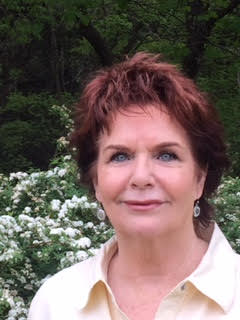
A year ago, a government panel declared that the painting, along with four other Klimts formerly owned by Bloch-Bauer that had been hanging in the Belvedere, was the property of his heirs, among them Maria Altmann-the ninety-year-old niece of Adele Bloch-Bauer, who lives in Los Angeles.

She was a well-known hostess whom Klimt depicted in a sinuous golden gown and robe, against an abstracted golden background, looking like a Byzantine socialite who has just set down her cigarette holder and is about to discuss the latest symphony by that terribly interesting composer Gustav Mahler.įor sixty-five years, the portrait hung in the Belvedere Palace, in Vienna, which houses the Austrian state’s incomparable collection of Klimts, including the artist’s most famous work, “The Kiss.” Eight years ago, however, Adele Bloch-Bauer’s heirs began efforts to reclaim the painting, which Austria had appropriated from Ferdinand Bloch-Bauer during the Nazi era. The painting was commissioned in 1903 by Ferdinand Bloch-Bauer, a wealthy Jewish Viennese industrialist and the husband of its twenty-five-year-old subject, the flush-faced, sensuous-lipped, richly bejewelled Adele Bloch-Bauer. The current object of Lauder’s greatest enthusiasm, and the most glittering jewel in his museum, is on the second floor: “Adele Bloch-Bauer I,” by Gustav Klimt. When he gesticulates, as he does to express the enthusiasm that his subdued demeanor might otherwise fail to convey, the movement is all below the elbow, like that of a reluctant swimmer splashing waist deep in cold water. He is just under six feet four inches tall, and moves with the self-consciousness of one who, having inadvertently claimed more than his fair share of vertical space, is careful not to dominate the horizontal. His eyes are heavy-lidded and lugubrious, his voice low and unmodulated, his smile cautious. He has graying hair, which he wears brushed back from his temples. He was dressed formally, as he invariably is, in a monogrammed white shirt and a blue pin-striped suit that was made by hand for him in Milan. Lauder, who is the younger son of the late Estée Lauder and is estimated to be worth $2.7 billion, is sixty-two years old. “Well, maybe not by limousine riders,” Price conceded. Lauder stepped off the carpeting, which appeared unsullied by his trespass. “Sir, sir, we take our shoes off when we walk on the felt-it will get marked!” Price cried. In another gallery, Lauder stepped into a reconstructed Mädchenzimmer-a girl’s room, from 1904, with a twin bed, a dresser, and a vanity-and adjusted a curtain hanging from a closet rail, to the mock dismay of the museum’s director, Renée Price, who was accompanying him on his tour.


“These people are sleeping on cots,” Lauder said, with a note of satisfaction later that evening, he was to host a dinner for the Salzer matriarch and her son by way of recompense. Lauder, who opened the Neue Galerie five years ago and drops by several days a week when he is in New York City, surveyed an austere master-bedroom suite that, in an impressive feat of curatorial persuasion, had been borrowed from a Viennese family, the Salzers, in whose home it remains in daily use. In an upstairs gallery, someone vacuumed specks of dust from the inside of a case that contained examples of Hoffmann’s sleek tableware designs downstairs, waiters were arranging champagne flutes on silver trays. It was an hour before the doors were to open for a cocktail party celebrating the latest exhibition-a show of domestic interiors designed by Josef Hoffmann, the Viennese architect, in the early part of the twentieth century-and last-minute preparations were being made. Lauder-the cosmetics heir, businessman, philanthropist, former ambassador, and sometime mayoral candidate-and one recent afternoon he made his way through the museum, checking on the jewels.

Cornelius Vanderbilt III, and is the kind of place that is usually described as a jewel box: compact, exquisite, and filled with things that conspicuously display the wealth and taste of its owner. The Neue Galerie, a museum at Fifth Avenue and Eighty-sixth Street that is dedicated to Austrian and German art, occupies the former home of Mrs. Ronald Lauder with Gustav Klimt’s “Adele Bloch-Bauer I” (1903), which he bought for a hundred and thirty-five million dollars.


 0 kommentar(er)
0 kommentar(er)
